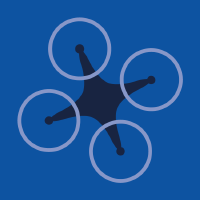Topic Editors

Advances in Design, Manufacturing, and Dynamics of Complex Systems
Topic Information
Dear Colleagues,
The analysis and understanding of nonlinear systems are paramount for several reasons. Many systems in nature and engineering exhibit nonlinear behavior due to their inherent complexity, making it crucial to understand these systems accurately for predictive purposes. Linear models often fail to capture the complex response of real-world systems, necessitating the use of nonlinear models for more accurate representations. Moreover, nonlinear systems often exhibit emergent properties, where collective behavior leads to novel phenomena not observed in linear systems. Understanding these emergent properties is vital for various applications, including assessing system resilience and stability, designing effective passive and active control strategies, and tuning to the system’s best vibration mitigation or energy harvesting performance. Additionally, nonlinear analysis allows for the exploration of rich and complex dynamics and interactions, such as chaos, bifurcations, and self-organization, providing insights into underlying mechanisms across diverse fields. Therefore, advancements in nonlinear analysis have far-reaching implications for tackling real-world challenges and advancing scientific knowledge.
This Topic serves as a paramount platform for eminent experts, scholars, academics, young scientists, and industry professionals engaged in the interdisciplinary domain of complex engineered systems. It endeavors to showcase the cutting-edge advancements in the field, thereby establishing the forefront of research. With a primary emphasis on comprehending the intricacies of complex nonlinear systems in different areas of engineering and technology, the Topic’s aim is to explore their industrial applications, either existing or prospective, culminating in a substantial impact through the exchange of knowledge and technology transfer. Such focused activities hold the potential to catalyze transformative shifts in both academic discourse and industrial practice, fostering innovation, collaboration, and the development of novel solutions to real-world challenges. By facilitating the dissemination of pioneering research findings and fostering interdisciplinary dialogue, this Topic seeks to not only advance the current state of the art but also inspire new avenues of inquiry and discovery.
Prof. Dr. Abdessattar Abdelkefi
Prof. Dr. Riadh Elleuch
Dr. Daniil Yurchenko
Topic Editors
Keywords
- complex systems
- nonlinear dynamics
- design and manufacturing
- unmanned systems
- thermal science and fluid dynamics
- materials and metamaterials
- industrial applications
- renewable energy
Participating Journals
| Journal Name | Impact Factor | CiteScore | Launched Year | First Decision (median) | APC | |
|---|---|---|---|---|---|---|

Applied Sciences
|
2.5 | 5.3 | 2011 | 18.4 Days | CHF 2400 | Submit |

Drones
|
4.4 | 5.6 | 2017 | 19.2 Days | CHF 2600 | Submit |

Energies
|
3.0 | 6.2 | 2008 | 16.8 Days | CHF 2600 | Submit |

Journal of Manufacturing and Materials Processing
|
3.3 | 5.1 | 2017 | 16.5 Days | CHF 1800 | Submit |

Technologies
|
4.2 | 6.7 | 2013 | 21.1 Days | CHF 1600 | Submit |

MDPI Topics is cooperating with Preprints.org and has built a direct connection between MDPI journals and Preprints.org. Authors are encouraged to enjoy the benefits by posting a preprint at Preprints.org prior to publication:
- Immediately share your ideas ahead of publication and establish your research priority;
- Protect your idea from being stolen with this time-stamped preprint article;
- Enhance the exposure and impact of your research;
- Receive feedback from your peers in advance;
- Have it indexed in Web of Science (Preprint Citation Index), Google Scholar, Crossref, SHARE, PrePubMed, Scilit and Europe PMC.



